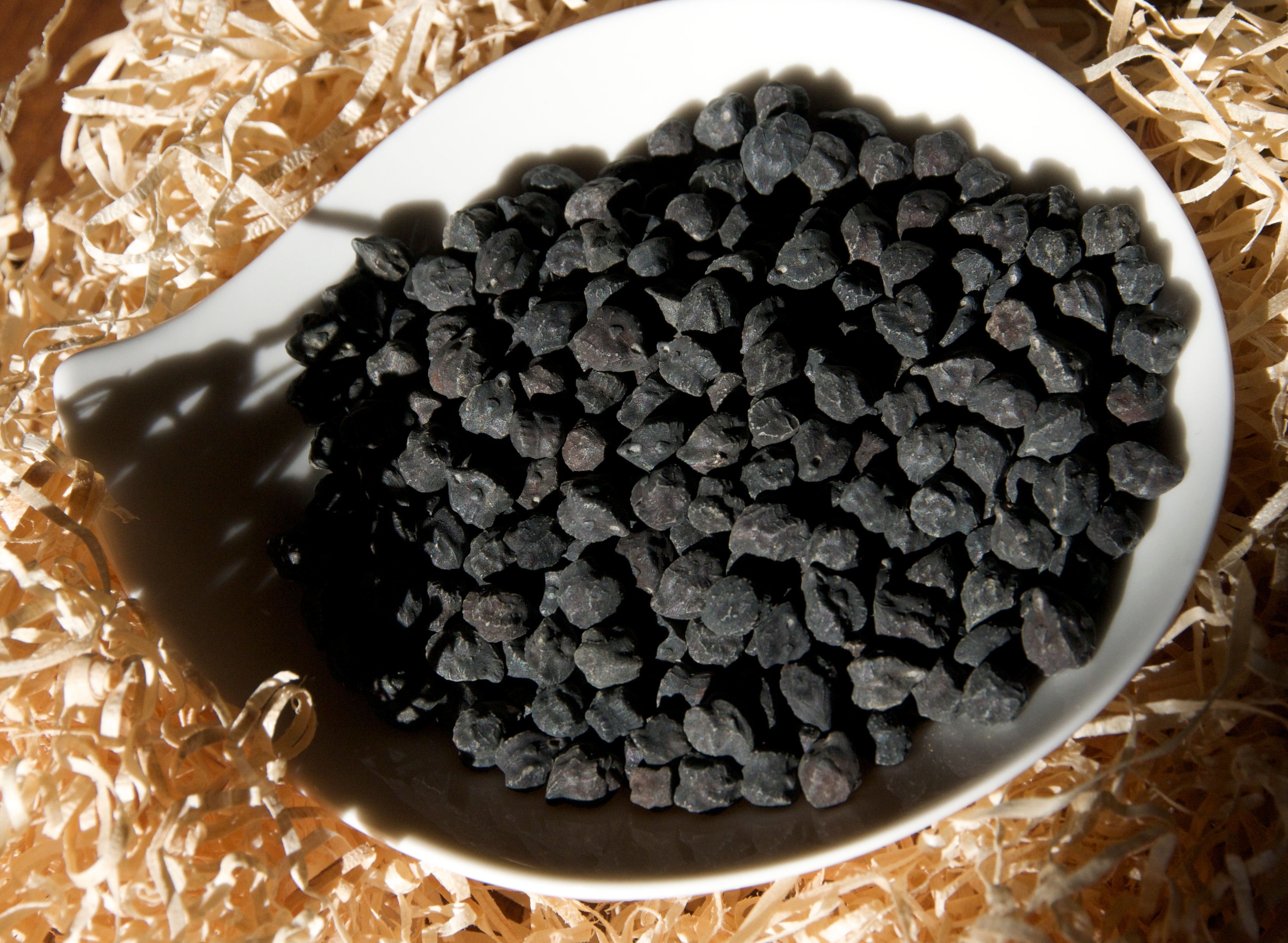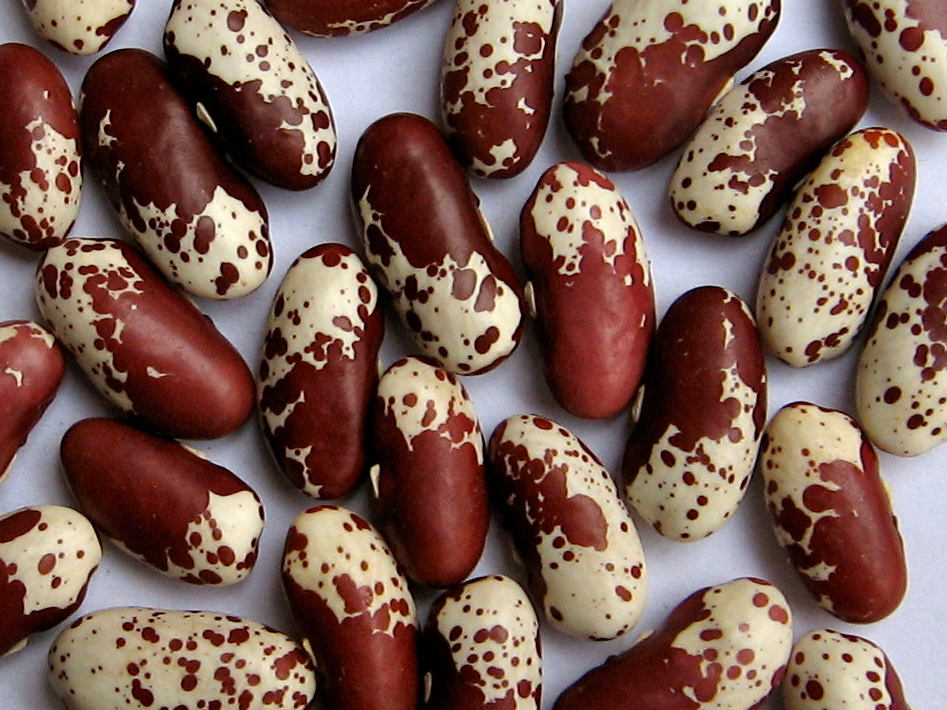“Pulses & Pulses: Guardian Farmers meet Youths” pairs seasoned farmers with apprentices to grow pulses
Nestled in Italy’s mountainous region of Abruzzo, the Gran Sasso and Monti della Laga National Park is one of the largest protected areas in Europe. With more than two thousand species of plants, the park is also one of Europe’s most biologically diverse areas. The diverse landscapes create a unique climate-vegetational environment, which offers a remarkable variety of agricultural landscapes that have been cultivated by inhabitants of the region for thousands of years. For several decades, the Park Authority has overseen the agricultural production on the land, ensuring the protection of its agricultural biodiversity while producing a wide range of products—including pulses like lentils and beans.
The Park Authority recently launched a new programme aimed at encouraging pulses production using traditional knowledge and heritage varieties from older generations of farmers. The programme, “Pulses & Pulses: Guardian Farmers meet Youths” will use the Park’s network of Guardian Farmers to teach young apprentice farmers how to grow pulses on the protected land. This exchange of knowledge will not only allow younger farmers to seek new means of rural employment, but will also ensure the future sustainable productivity of the land. We spoke with Dott.ssa Silvia de Paulis, who is responsible for Agro Silvo Pastorale Service at the park, to learn more about the programme and how it will promote biodiversity while supporting the rural economy.
1. What are the overall goals of the project?
The protection of agricultural biodiversity is a necessity for our Park, but also an opportunity to relaunch the rural economy, which for generations has ensured the existence of peoples in marginal and rural areas. Unfortunately, in recent years we have seen a gradual migration of young people to urban areas.
The project "Pulses & Pulses: Guardian Farmers meet Youths", intends to reverse this pattern by encouraging an exchange and transition between those who hold knowledge and farming skills (“Guardian Farmers”) and the youths who want to learn and put their new knowledge into practice.
In keeping with the International Year of Pules slogan "Nutritious seeds for a sustainable future", the Park Authority wants to focus on these important and valuable crops.
This project communicates the passion and foresight of elderly farmers who have preserved a large number of different varieties of seeds. It also serves as an alternative for young people entering the world of quality agricultural production, driven by the scarcity of employment opportunities.
Therefore, the Park Authority intends to create conditions to increase the cultivation of pulses by involving youths. These new farmers will be supported by farmers belonging to the network of the Guardian Farmers of the Park, with the aim of triggering a virtuous cycle of crop and cultural expansion, with subsequent positive effects in terms of environmental protection and the preservation of local economy.
"Pulses & Pulses" is not only about sowing pulses, but also skills, traditions and trust, with the hope of gathering the knowledge of our predecessors and passing it down to future generations.
2. Why did you develop the mentorship model? What are the benefits of pairing youths with older farmers?
The main aim is undoubtedly to involve as many young people and new farmers as possible in the mitigation process related to the constraints imposed by the conservation of protected areas. At the same time, we want to address youth unemployment by giving them a starting point, an opportunity to gain experience and learn on the field. It is important to build a real network of knowledge exchange, relationships, and opportunities between different generations, while building a larger network of farmers to become stewards of the land who can all help manage the protected territory.
For several years, the Park Authority has initiated virtuous processes to identify and safeguard the protected autochthonous germplasm, which was cultivated by ancient civilizations. An operational tool was identified by the Network of Guardian Farmers for the varieties at risk of extinction. The ancient cultivars are the result of selection made both by man and nature with the passage of time, and they have evolved in different forms and with genetic characteristics that allow the plants to resist and adapt to climate change.
In a world where the climate changes rapidly, it is easy to understand how these cultivars represent a valuable asset to protect the future of humanity.
Very often, we return to the concept of bringing youths back to land, especially as we witness a growing number of people working in agriculture, and in particular those under the age of 35. This trend, at least in part, is due to the fact that agriculture traditionally absorbs labor force outflow from other sectors in times of crisis. But it is also true that more and more young people come back to agriculture for the simple lifestyle choice, and this is the best way for them to progress professionally.
 3. Why or how is the knowledge of cultivating pulses lost?
3. Why or how is the knowledge of cultivating pulses lost?
There are several risks for knowledge gaps related to the cultivation of pulses. For example, many varieties of legumes, especially beans, are climbing varieties that need support. These supports are traditionally made well in advance, using reeds or wooden poles obtained from the pruning of the rows of trees that separate the fields, depending on the area. The cultivation of pulses is also essential from the agronomic point of view, as these crops fall under the four or five-year crop rotation with cereals and potates, which is typical of this area. This is because their root system is able to replenish and restore the content of nitrogen in the soil. This knowledge, today scientifically proven, in the past was simply the result of empirical observation of nature by farmers. This unwritten knowledge must be passed down orally between farmers over generations.
4. What varieties of pulses will you be growing?
There have been numerous initiatives to census, retrieve and maintain local varieties involving farmers who later became the keepers of those varieties. Among the pulses from the network of the Guardian Farmers, those which will be considered in the "Pulses & Pulses” are:
- Chickpeas (Cicer arietinum L.) local ecotypes: rod chickpea, prince chickpea, red chickpea, bream chickpea.
- Grass pea (Lathyrus sativus L.), grass pea (Lathyrus cicera L.).
- Beans (Phaseolus vulgaris L.). local ecotypes: ciavattone bean, gialet bean, black bean, bean oil, bean pea, rod bean, cowpea, cannellini beans, white and red bean, black bean veneers, bean queen, thrush bean, a quail egg bean, bean Quarantana, september bean.
- Broad beans (Vicia faba L.). Half stone.
- Lentil (Lens Culinaris Medicus). local ecotypes: Santo Stefano di Sessanio lentils, black lentils.
- Robiglio (Pisum sativum L. arvense (L.) (Gams.).
5. How will the harvested pulses be used? (Consumed by farmers? sold at market?)
The crop will be used for local consumption or direct sale in local markets. Some of the collected seeds will be stored for the next planting season. The project requires that a portion of the seeds received must be "given back", as dictated by traditional agricultural practices, by Guardian Farmers at "SeminLibertà", an annual seed exchange promoted by the Park Authority. This free exchange of seeds is essential and strategic, considering that "agricultural biodiversity is used or lost."
 6. Why is it important to the Park to protect biodiversity and how will this project help?
6. Why is it important to the Park to protect biodiversity and how will this project help?
The protection and maintenance of agricultural and livestock biodiversity in a heavily populated protected area is a duty and a necessity, but also an opportunity to relaunch the rural economy that for generations has ensured the survival of populations in marginalized and rural areas. This is why for years the Park Authority has carried out initiatives and projects intended to foster, enhance and revitalize the agricultural and livestock sector. We focus on techniques and methods that respect the environment, the call and rhythms of nature, while at the same time generating new economic opportunities and employment.
The gradual abandonment of land in mountainous areas has led to a loss not only of local varieties, but especially of knowledge and skills. Therefore preserving this biodiversity means not only keeping these crops alive, but also reinforcing the knowledge gained in relation to the sustainable management of land and landscape.
7. Who is eligible to apply for participation to the programme?
The "Pulses & Pulses" programme is open to residents of the 44 municipalities of the Park (Abruzzo, Lazio and Marche) between the ages of 18 and 40, who are not already enrolled in the Register of Companies in the farmers’ section. They must have no marital relationship or kinship to any of the Guardian Farmers.
In the selection of youths, the Park Authority will give priority based on the possession of land needed for cultivation (ownership, rental and loan) and on young age.
For the available positions in 2016, we will select a maximum of 27 youths who will work hard to cultivate at least one cup (local unit of measurement, equivalent to about 622 square meters) of land in pulses and several farmers who will have training roles. The latter will come from the network of the Guardian Farmers of the Park, having already acquired relevant experience in the cultivation of pulses that they can then communicate and pass on to the young farmers.

